Enid Blyton's tangled love life: how the children's author risked scandal by cavorting with young army officers, threw glamorous parties at which she reportedly played naked tennis, claimed to have lesbian lovers and left her husband for a surgeon
Enid Blyton's wholesome tales of adventure and joy made her the queen of children's literature.
Having written series such as Noddy, The Famous Five and Malory Towers, the English author was outwardly an indisputable national treasure.
But as highlighted in a new book, there was enough excitement, intrigue and scandal in her private life to fill the pages of the most racist novel.
It has long been rumored that Blyton may have had a lesbian affair with her children's nanny, Dorothy Richards, as well as other women.
Now English professor Nicholas Royle has revealed in his book David Bowie, Enid Blyton and the Sun Machine that his grandmother – illustrator Lola Onslow – also had a relationship with the author.
He writes: 'One day my mother said to me, 'Your grandmother had an affair with Enid Blyton.' Those were her words.”
Blyton also held glamorous parties where patrons included young army officers and a bachelor neighbor – and on one occasion it was rumored that he was playing tennis naked when visitors arrived.
But it was her relationship with her first husband Hugh Pollock that caused the most intrigue. The couple were both unfaithful to each other and divorced in 1942, when Blyton had surgeon Kenneth Darrell Waters withdrawn.
Enid Blyton's wholesome tales of adventure and joy made her the queen of children's literature
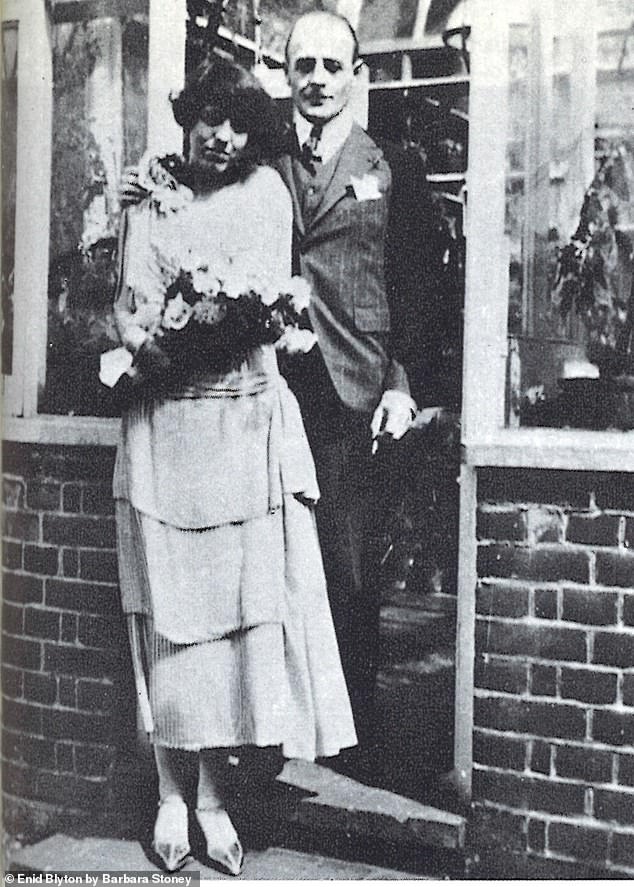
Blyton married former soldier Hugh Pollock in 1924. Pollock was an editor at the company that would publish her books. Above: The couple on their wedding day
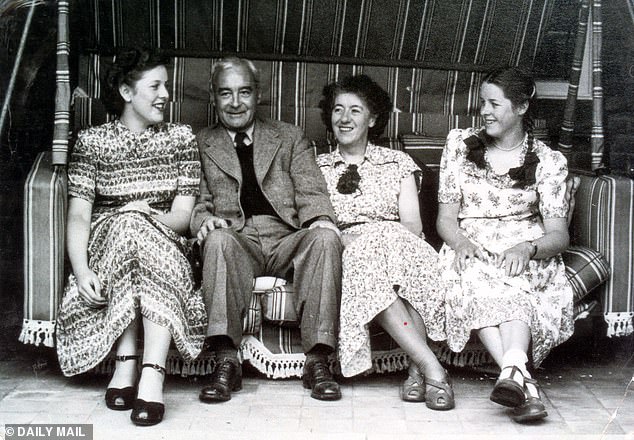
Blyton is seen with her second husband Kennth Darrell Waters and her daughters Gillian (left) and Imogen
Blyton later tried to destroy her former husband's reputation and prevented him from ever seeing their two daughters, Gillian and Imogen.
It is not clear when the author's alleged affair with Onslow – with whom she mainly collaborated on her Book of Fairies – began.
But possible dates range from 1920 to 1924, the year she married Pollock.
Professor Royle revealed in his book that he was told about the alleged affair when he was in his 20s, but was not interested at the time.
He said the memory came back to him during the coronavirus pandemic.
Professor Royle said he was 'tempted by the number of references he came across to Blyton's rumored bisexuality or her alleged relationships with women.'
Pollock was a former soldier who was ten years her senior and was an editor at the firm that became her permanent publisher.
The couple initially struggled to have children, but were able to do so six years into their marriage after Blyton underwent groundbreaking fertility treatment.
Their first daughter, Gillian, arrived in 1931, while Imogen was born in 1935.
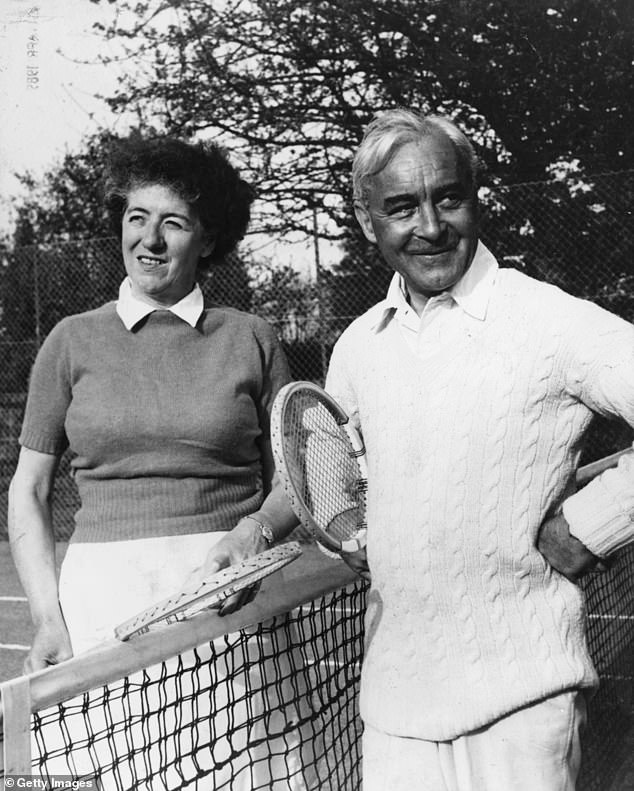
Blyton married Kennth, a former surgeon, in 1943. The author then tried to destroy her first husband.
Shortly after Imogen's arrival, Blyton hired Dorothy Richards as a nanny. The trained nurse often wore a formal shirt and tie, rather than traditional feminine attire.
Author Nadia Cohen revealed in her 2018 biography of Blyton that Dorothy quickly became more than an employee.
The pair had an intense friendship that left Pollock feeling left out.
They went for walks and shared private jokes and Dorothy even replaced Pollock in proofreading early drafts of Blyton's work.
The closeness of their relationship led to claims that they were lovers.
Blyton's daughter Imogen later wrote: 'There may have been some homosexual attraction between these two women.'
The letters they exchanged also indicated something more than a friendship.
“I want to hear everything you have to say, even if I argue first,” Blyton wrote in one. 'You can say anything to me. I want you to.'
She and Pollock lived largely separate lives in 1938, which helped encourage Blyton as she threw glamorous parties at their palatial home in Beaconsfield, Buckinghamshire.
According to Ms. Cohen, the guest lists often included single young men, including the young army officers and Blyton's neighbor.
These intense periods of social contact led to repeated rumors in the community and even in the newspapers.
Pollock is said to have been furious when he returned home to hear Blyton was inappropriately entertaining young men.
But he also had an affair with novelist Ida Crowe. Blyton was told about this in an anonymous phone call in which a voice said, “Don't let Ida crow over you.”
Early in 1941, Blyton was persuaded to join Dorothy on a trip to visit her sister Betty Marsh in Devon.
Also on Betty's guest list was Kenneth Waters. According to Ms. Cohen, from the moment the couple first met over a game of bridge, they were in love.
They soon began an affair, with Blyton even renting a flat in Knightsbridge to provide a base for their liaisons.
But she callously used Dorothy's name to cover her tracks, and this decision came back to her when Kenneth's wife discovered her husband's betrayal.
Blyton denied any impropriety and instead insisted that Dorothy was the true culprit.
Imogen later wrote: 'For a year she continued her life with two different men, cheating, or appearing to cheat, on everyone.'
Pollock then left the family home for good after a final bitter argument.
Blyton filed for divorce and then insisted that Pollock could not see either of their daughters.
She married Kenneth in October 1943, while Pollock subsequently tied the knot with Ida.
Blyton is said to have been furious about Kenneth's second marriage and so wrote a scathing letter to Ida, detailing his alleged misdeeds during their marriage.
Ida later wrote in her own book that Blyton depicted Pollock as a “drunken, lying villain.”
Pollock never saw his daughters again, while Blyton also insisted she no longer wanted him to work at George Newnes, the company that published her books at the time.
In 1945, at the age of 48, Blyton unexpectedly became pregnant again. But five months into the pregnancy, she fell from a ladder while collecting apples and lost the baby.
Imogen later wrote that her mother may have deliberately risked the pregnancy to ensure she could continue writing.
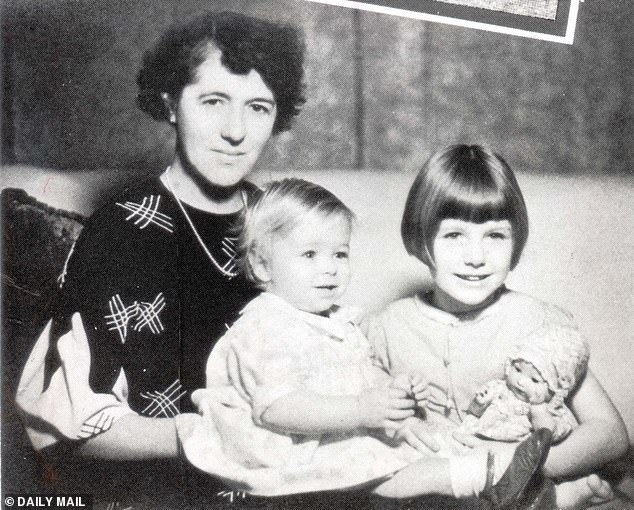
Enid Blyton with daughters Imogen (left) and Gillian. She was later described by Imogen as having 'no maternal instincts'
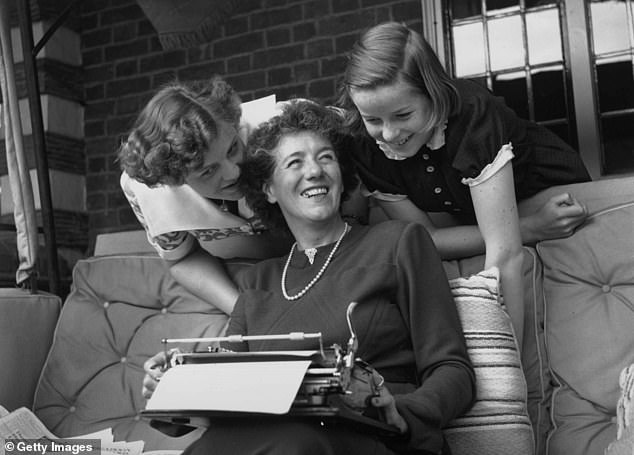
We see Blyton and her two daughters laughing together in 1949 as she sits with her typewriter
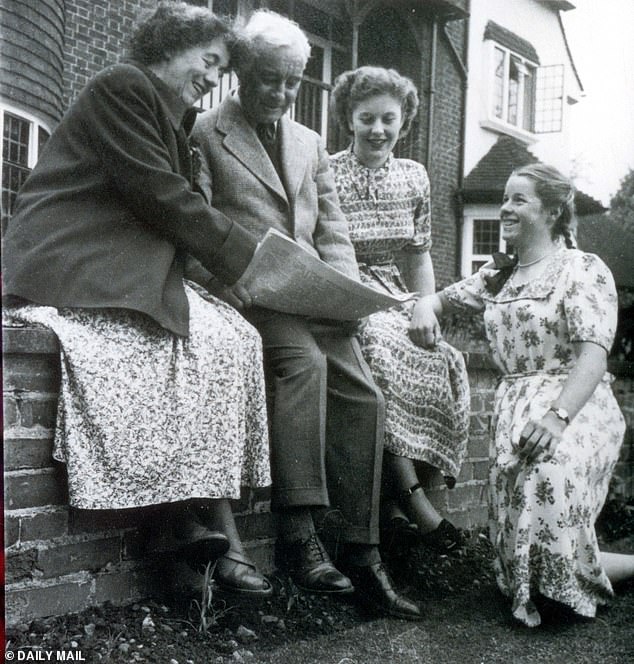
Blyton with second husband Kenneth and daughters Gillian and Imogen
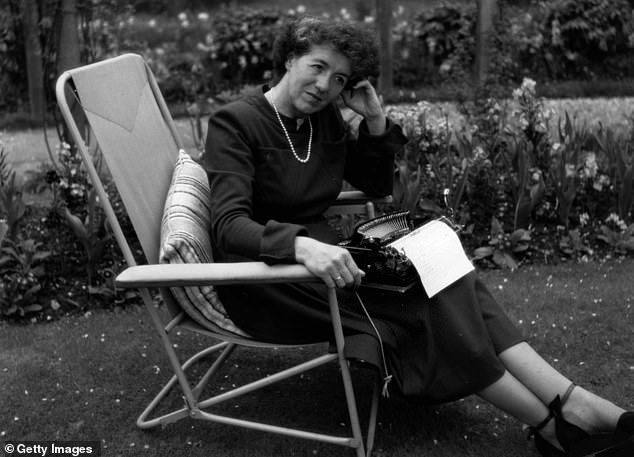
Blyton sits in the garden of her palatial home in Beaconsfield, Buckinghamshire
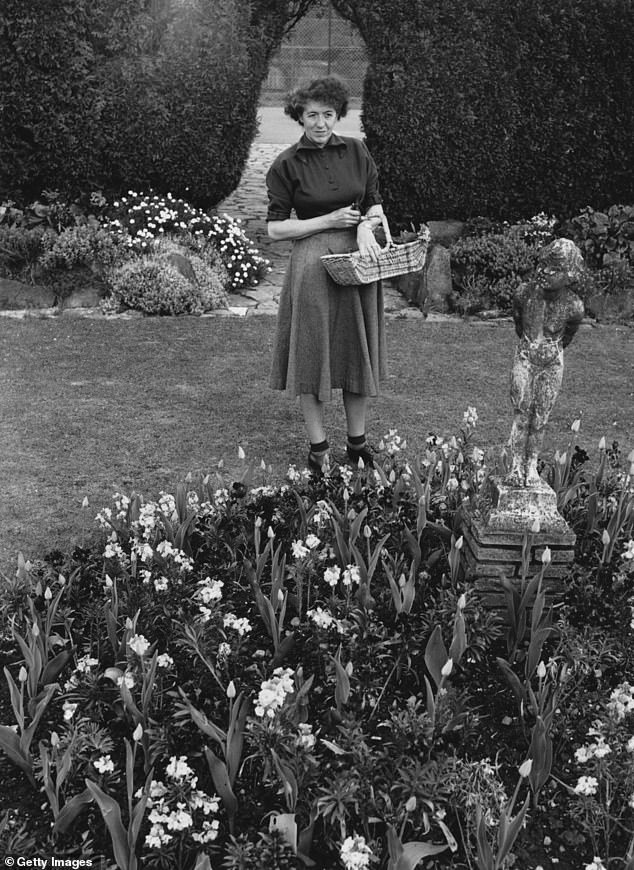
Blyton tends the garden of her palatial home in 1949. By then she was with her second husband
'She would have been aware of the great risk that she would have a child with a disability at her age; and her books were still the most important part of her life.”
Blyton was said to have been unkind to her two daughters and showed neither much love.
Imogen called her 'arrogant, insecure and without a trace of maternal instinct'.
This is despite the fact that Blyton presented herself in interviews as a devoted mother.
She rarely read to her children and was prone to hitting them with a hairbrush if they did something wrong.
Blyton's 40-year career saw her write more than 800 books and earn millions of pounds.
She eventually suffered from dementia after a period of ill health beginning in the mid-1950s.
The author died in her sleep in 1968 at the age of 71.
